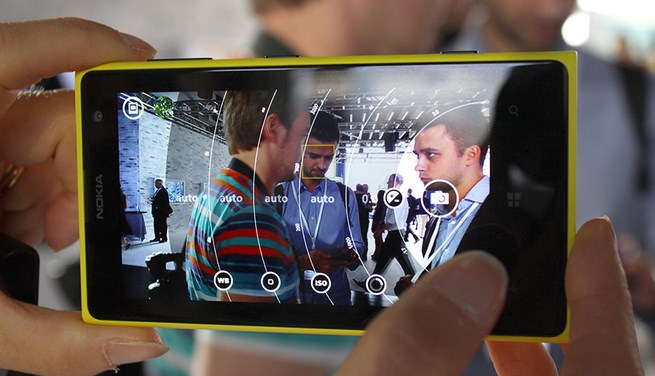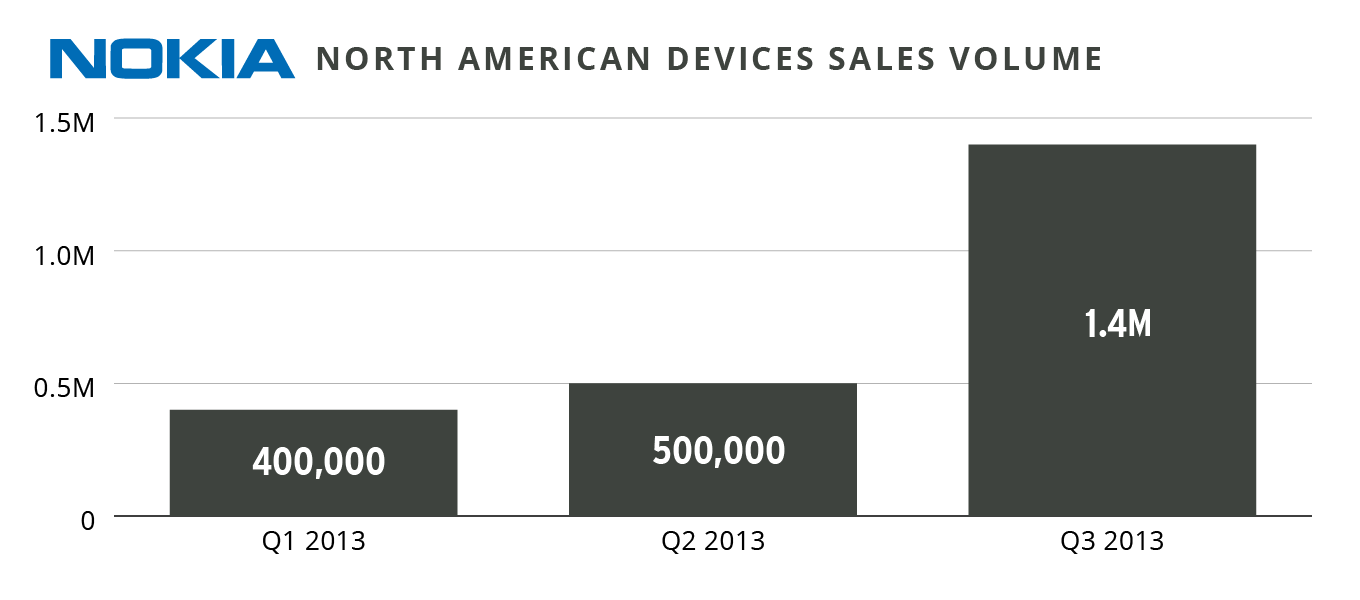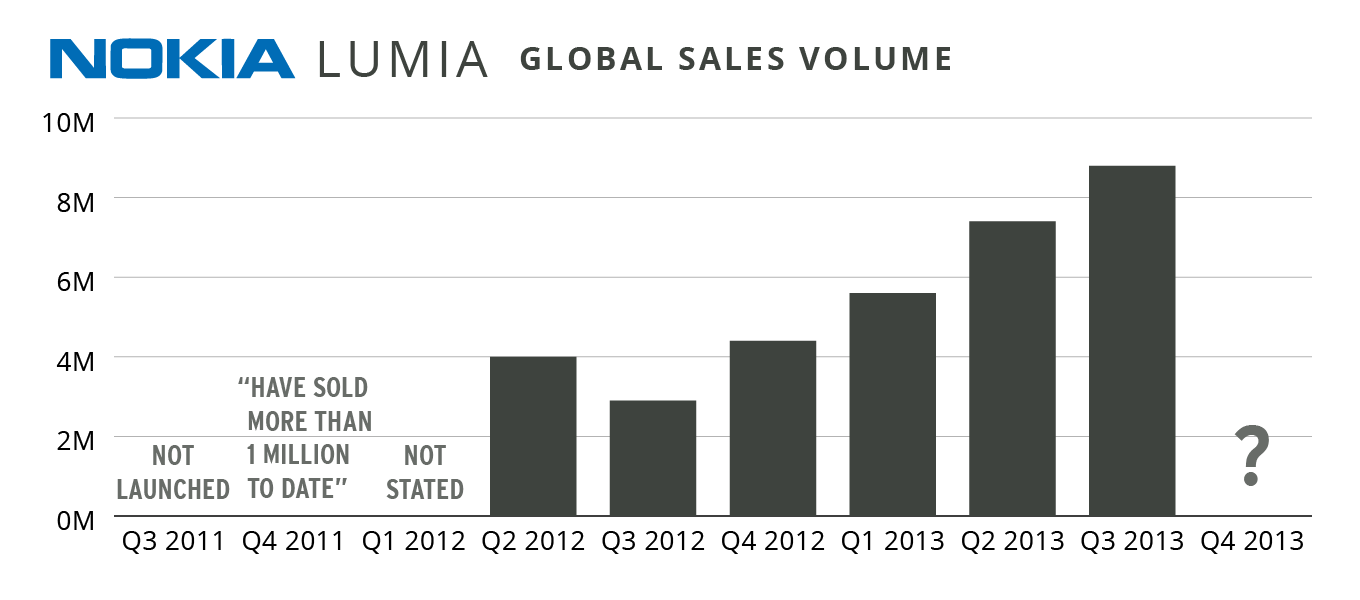According to its most recent earnings report, Nokia appears to have finally found market traction in North America for its Lumia line of Windows Phone-based smartphones. This bears well for the platform itself, and Microsoft, who is buying Nokia’s device business for more than $7 billion.
Nokia’s device unit volume in North America spiked from 500,000 units in the second quarter of 2013 to 1.4 million devices in the third. For comparison, in the first quarter of this year, Nokia shipped 400,000 devices in North America. In the year ago third quarter, that figure was 300,000. To therefore have Nokia almost triple its volume in the region in a single quarter, comparing sequentially, is more than surprising.
According to Nokia, the “sequential increases [in North America] were primarily due to higher sales in our Smart Devices business.” So, most of the sales delta is smartphone-based. And, given that the mobile market in the United States is a far larger mobile market than Canada, it can be presumed that most of the sales took place south of the border.
Therefore, Nokia sold far more Windows Phone handsets in its third quarter than it had in the preceding quarter. Estimating roughly, it could easily be posited that Nokia sold more than 1 million Lumia devices in the United States in its third quarter.
Here’s the graph:
The Nokia Lumia line of smartphones was released in November of 2011, during the company’s fourth quarter. In that period, the company later noted that it sold “well over 1 million Lumia” devices.
In the following quarter, the first of 2012, Nokia did not disclose Lumia sales figures. In the second quarter of 2012, it reported 4 million units were sold during the period. From this we can surmise that Nokia enjoyed modest, but quickly expanding sales rates of its Lumia line.
However, in the third quarter of 2012, sales fell to 2.9 million units, a very troubling point for the company. Nokia blamed it on having “shared the exciting innovation ahead with [its] new line of Lumia products.”
From that point, Lumia sales have expanded in each sequential quarter, from 4.4 million in the third quarter of 2012, to 8.8 million in the third of 2013, Nokia’s most recent quarter. Here’s the chart, so you have the full picture:
So, global growth has been steady, and in the fourth quarter Nokia could sell more than 10 million Windows Phone devices, breaking that threshold for the first time. Contrasted, however, with its North American sales, you have to appreciate the company’s struggle: While its global operation was expanding and ticking right along, North America was stuck.
Introduction of the Lumia 520 (and 521) on the low-end, and the Lumia 1020 on the high-end, coupled with the software improvements in Windows Phone 8, appear to have unlocked, at last, the keys to growth in the United States.
This matters because if Nokia failed to ignite growth in this market, it would not be out of the question that its carrier support would have been in jeopardy. And once lost, such support is difficult to rekindle. Therefore, the strong quarter implies that Nokia’s long-term prospects in the U.S. market are at least alive.
—
Nokia’s Windows Phone strategy has long been panned by critics as doomed, helpless, hapless, perfidious, and expensive. Microsoft’s Windows Phone strategy has been pilloried in the same way. Now that the two are joining teams, the opprobrium can be aimed at a single entity, saving time. Kidding aside, Nokia – which is the de facto Windows Phone OEM, period – proved that it could ship volume on the platform several quarters ago. But the North American question lingered: Could Microsoft’s own platform sell in its home market? After years of slog, the answer is now a firm maybe.
So what to look for? Sequentially rising Lumia volume in North America. If Nokia moves, say, 2 million devices in the fourth quarter in the region (and again notes that the rising device figures are based on smartphone sales), we’ll have a ball game.
All data via Nokia.


